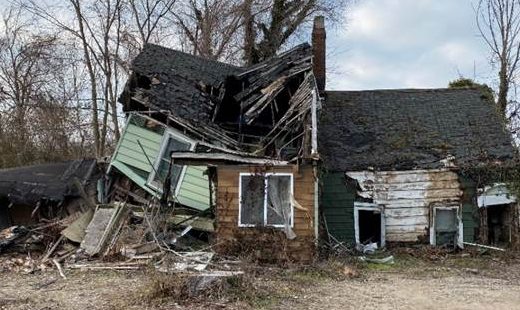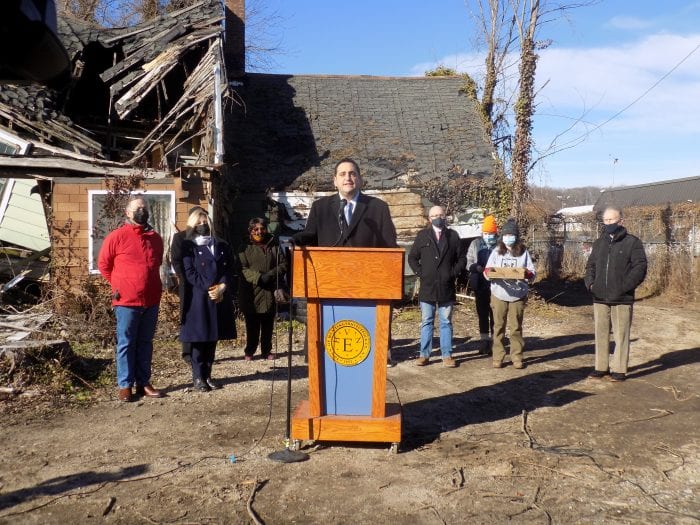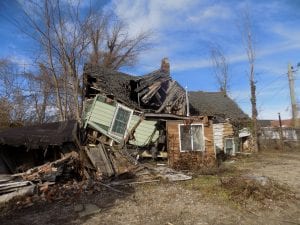List includes properties in Sag Harbor, Port Jefferson, Huntington, St. James, East Hampton, Southampton and East Hills.
Preservation Long Island’s Endangered Historic Places List for 2021 includes seven sites and one district facing a variety of threats from demolition and overdevelopment, to a lack of municipal funding and support for historic preservation in communities throughout our region.
Important historic places across Long Island are threatened by a variety of adverse conditions, from outright demolition to a lack of appreciation for their historic value, or the inability to develop sustainable long-term plans for preservation and stewardship. Preservation Long Island (formerly the Society for the Preservation of Long Island Antiquities), established the Endangered Historic Places Program (EHPP) with the goal of raising region-wide support for historic places facing precarious circumstances.
“The program offers Long Islanders an opportunity to advocate for preservation in their communities while learning how to use tools like landmark designation, tax incentives, and public outreach,” said Alexandra Wolfe, Preservation Long Island’s Executive Director. “Our program partners receive priority technical assistance from our professional staff and their listings are featured on our website and social media”.
The pandemic did not have a negative impact on the public response to the open call for nominations issued last November. “This year marks the largest number of nominations received in a single program year since the establishment of the program in 2010,” said Sarah Kautz, Preservation Long Island’s Director of Preservation and Advocacy. A total of 18 nominations were submitted for the 2021 program year from communities across Long Island.
A panel of Preservation Long Island staff and trustees, as well as experts in architecture, historic preservation, and other related fields selected the properties based on three key criteria: overall historic significance, severity of the threat and impact the EHPP listing will have on efforts to protect the nominated site.
Each of the eight sites will be showcased in a series of free virtual programs that will include interviews and panel discussions open to the public in June and July. Visit the 2021 Endangered Historic Places page on our website to learn more about each of the selected sites, and to register for the free virtual events.
Preservation Long Island invites all Long Islanders to join us in celebrating and supporting the important sites on Long Island’s List of Endangered Historic Places for 2021:
James Brooks & Charlotte Park Home & Studios, Springs, East Hampton Town Community Preservation Fund. Purchased by East Hampton Town in 2014, this landmarked home and studios of Abstract Expressionist artists in Springs is threatened by vandalism, disrepair, and demolition.
John Mackay III’s “Happy House”, Village of East Hills, Nassau County. One of the few remaining Gilded Age country houses in East Hills Village is threatened by demolition and subdivision.
Peter Crippen Home Site, Town of Huntington, Suffolk County. A rapidly deteriorating property owned by Huntington Town with strong ties to Long Island’s early colonial development and African American history.
Pyrrhus Concer Home Site, Village of Southampton, Town of Southampton Community Preservation Fund. Purchased by Southampton Town in 2015, restoration of this nationally significant site of African American history in Southampton Village is threatened by inter-municipal delays and other issues.
Rogers/Remz Grain & Feed Building, Port Jefferson Station, Town of Brookhaven, Suffolk County. This early industrial farming structure at the heart of Port Jefferson Station is threatened by demolition and urban renewal.
Sag Harbor Hills, Azurest, Ninevah, Subdivisions (SANS) Historic District, Village of Sag Harbor, Suffolk County. Demolition and intensive redevelopment threaten one of Long Island’s most significant Jim Crow- and Civil Rights-era historic districts in the Village of Sag Harbor.
Saint James Firehouse, Town of Smithtown, Suffolk County. A historic firehouse in active service since 1925 threatened by a lack of resources and municipal support for much-needed repairs.
William Tooker House, Village of Port Jefferson, Suffolk County. A rare pre-1750 structure in Port Jefferson Station with strong ties to Long Island’s colonial past threatened by neglect, demolition, and urban renewal.
Preservation Long Island’s Endangered Historic Places Program is made possible in part by a grant from the New York State Council on the Arts with the support of Governor Andrew M. Cuomo and the New York State Legislature.
About Preservation Long Island
Preservation Long Island is a not-for-profit organization that works with Long Islanders to raise awareness, appreciation, and support for the protection of our shared past through advocacy, education, and the stewardship of historic sites and collections. http://preservationlongisland.org/
Image credit: “Peter Crippen House front façade, January 2021. Courtesy of Preservation Long Island.”








